Boston Scientific announced today the first implantation of its Vercise™ DBS System as part of the INTREPID clinical trial. INTREPID is a prospective, multi-center, double-blinded, randomized, controlled study to evaluate the safety and effectiveness of motor function and overall quality of life in patients with the Vercise DBS System for the treatment of Parkinson’s disease. According to the press release:
Category Archives: Brain Stimulation
Active implantable medical devices for brain stimulation
St. Jude’s DBS Systems First to Receive CE Mark for Both Primary and Secondary Dystonia
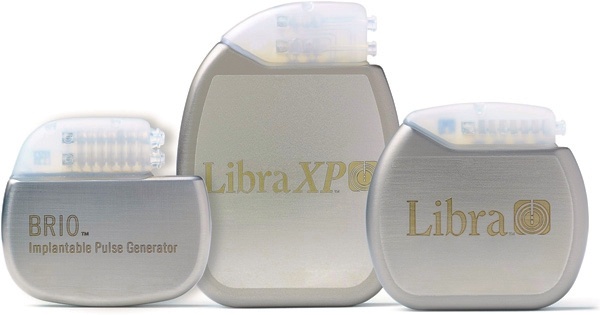
St. Jude Medical announced CE Mark approval of its Brio™, Libra™ and LibraXP™ deep brain stimulation (DBS) systems for managing the symptoms of intractable primary and secondary dystonia, a neurological movement disorder that causes a person’s muscles to contract and involuntarily spasm, reducing the ability to control movement. This approval represents the first by a regulatory agency for the use of deep brain stimulation to manage both primary and secondary dystonia.
Medtronic Introduces First Neuromodulation Systems Compatible with Full-Body MRI
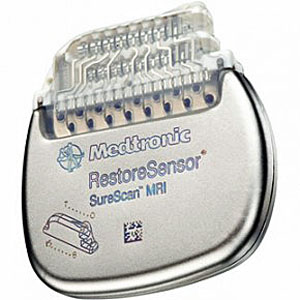
Medtronic has introduced in Europe the first and only implantable neurostimulation systems indicated for use in the treatment of chronic back and/or leg pain that are designed for full-body Magnetic Resonance Imaging (MRI) scans under specific conditions. Medtronic SureScan neurostimulation systems include enhancements to existing devices as well as specially designed leads to reduce or eliminate the hazards produced by the MRI environment. The devices also include a proprietary SureScan programming feature, which sets the device into an appropriate mode for the MRI environment.
Functional Neuromodulation Ltd. Starts Study using DBS of the Fornix (DBS-f) for Mild Alzheimer’s
 Toronto-based Functional Neuromodulation announced that it implanted the first U.S. Alzheimer’s patient in the “ADvance Study” with a deep brain stimulation (DBS) system meant to improve cognitive performance. ADvance will evaluate the safety and potential clinical benefit of DBS of the fornix (DBS-f), a major inflow and output pathway in the brain’s memory circuit, for patients with mild Alzheimer’s. The ADvance Study is being conducted using Medtronic Activa DBS IPGs.
Toronto-based Functional Neuromodulation announced that it implanted the first U.S. Alzheimer’s patient in the “ADvance Study” with a deep brain stimulation (DBS) system meant to improve cognitive performance. ADvance will evaluate the safety and potential clinical benefit of DBS of the fornix (DBS-f), a major inflow and output pathway in the brain’s memory circuit, for patients with mild Alzheimer’s. The ADvance Study is being conducted using Medtronic Activa DBS IPGs.
While DBS has been an effective treatment for movement disorders for more than 15 years, it was only recently that this approach was first applied to Alzheimer’s. Dr. Andres Lozano, a neurosurgeon at University of Toronto and Scientific Founder of Functional Neuromodulation, originated the concept of treating memory disorders using deep brain stimulation (DBS) while treating a patient suffering from morbid obesity. In this patient, DBS stimulation of the hypothalamus and fornix was associated with an unexpected observed improvement in the patient’s memory.
Boston Scientific Receives CE Mark of Vercise™ Deep Brain Stimulation System
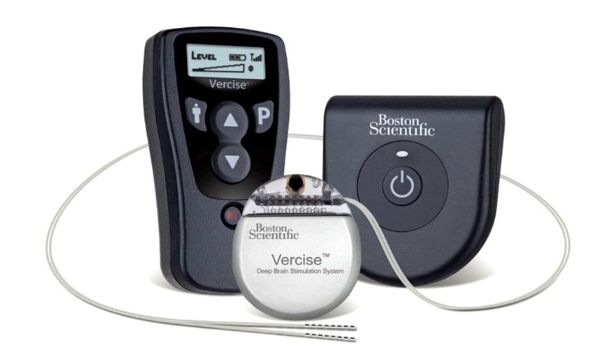
Image Credit: Boston Scientific
Boston Scientific Corporation received CE Mark approval for use of its Vercise™ Deep Brain Stimulation (DBS) System for the treatment of Parkinson’s disease. The Vercise DBS System is the first and only commercially available DBS system to incorporate multiple independent current control, which is designed to selectively stimulate targeted areas in the brain. This system is an innovative technology that is designed to provide physicians fine control of stimulation.
Monash University in Australia Starts Test of Direct-to-Brain Visual Prosthesis Chips
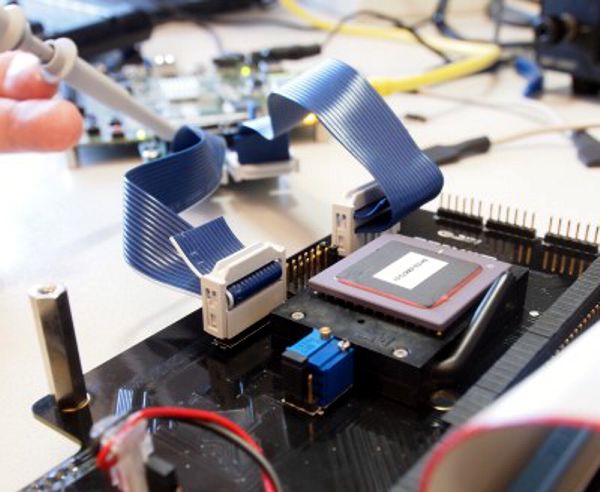
Image Credit: Monash Vision Group, Monash University, Australia
Engineers from the Monash Vision Group (MVG) have begun trialling the ASICs for a direct-to-brain visual prosthesis that is expected to enter human clinical trials in 2014.
The prosthesis will consist of a tiny camera mounted into a pair of glasses, which acts as the retina; a pocket processor, which takes the electronic information from the camera and converts it into signals enabling the brain to build up a visual construct; and cortical implants of several tiles which will be the portal for the stimulation of the visual cortex. Continue reading
John Hopkins Researcher Develops New Early-Warning Seizures Detector with Low False-Positive Rate
 Johns Hopkins’ Sridevi V. Sarma, an assistant professor of biomedical engineering, has devised new seizure detection software that, in early testing, significantly cuts the number of unneeded brain-stimulation therapy that an epilepsy patient would receive.
Johns Hopkins’ Sridevi V. Sarma, an assistant professor of biomedical engineering, has devised new seizure detection software that, in early testing, significantly cuts the number of unneeded brain-stimulation therapy that an epilepsy patient would receive.
According to Sarma, “These devices use algorithms—a series of mathematical steps—to figure out when to administer the treatment,” Sarma said. “They’re very good at detecting when a seizure is about to happen, but they also produce lots of false positives, sometimes hundreds in one day. If you introduce electric current to the brain too often, we don’t know what the health impacts might be. Also, too many false alarms can shorten the life of the battery that powers the device, which must be replaced surgically.” Continue reading
Neuromed’s TIME Battery- and RF-Powered Totally Implantable Multichannel Spinal Cord Stimulator (ca. 1988)
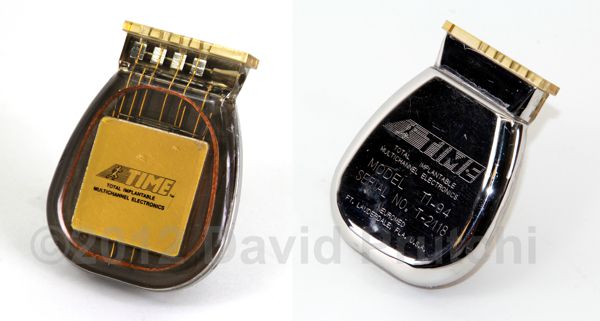
Neuromed TIME IPG on loan from Daniel Villamil's collection.
Neuromed was formed in 1980 with an initial capitalization of $150,000 by Bill Borkan through money obtained when Borkan`s parents took out a second mortgage on their home. Borkan’s desire to help his sister, Jennie, a cerebral palsy patient, got him started in neurostimulation technology. In the next few years, Neuromed developed and marketed a RF-powered implantable spinal cord stimulator, along with its external radio frequency transmitter.
Throughout the 1980s, development of more advanced devices was ongoing at Neuromed. My friend Daniel Villamil from CCC Medical has in his collection one of these more modern units, which he lent to me for photographing. The “Total Implantable Multichannel Electronics” (TIME) spinal cord stimulator shown in this picture went into clinical trials around 1988. This was a device that was internally powered by its own battery. However, it could also be RF-powered after the eventual battery failure. Continue reading
St. Jude’s DBS Study Confirms Benefit of Constant Current System for Parkinson’s Disease

- Image Credit: St. Jude Medical
Today St. Jude announced that its first controlled study of Deep Brain Stimulation (DBS) confirms benefit of constant current system for patients with Parkinson’s Disease.
Results were published online today by The Lancet Neurology journal. The aim of the study was to evaluate the Libra(TM) and LibraXP(TM) DBS constant current systems to determine the devices’ safety and effectiveness in managing the symptoms of PD. Continue reading
Biotectix

- Image Credit: Biotectix
Biotectix of Ann Arbor, MI recently contacted me to let me know of new conductive polymer materials that they are developing to enhance the performance of next-gen implantable stimulation and sensing devices.
Indeed, their materials sound very promising. According to Biotectix, their electrode coatings and device components are made from proprietary conducting polymers that provide intimate, long-term electrical and biological connections between implantable electrodes and the target tissue. They offer the conductivity and stability of metals at a low-cost with the ease of processing and biological functionality of polymers. Continue reading
Northstar Neuroscience’s Renova Cortical Stimulation System (1999-2009)

Northstar was founded in 1999 as Vertis Neuroscience headquartered in Seattle, WA, and the original goal was to develop electrical stimulation for chronic back pain. In 2003, under its new name, Northstar Neuroscience, then developed the Renova cortical stimulation system to deliver targeted electrical stimulation to the brain cortex as a treatment for stroke-related upper extremity. Continue reading
